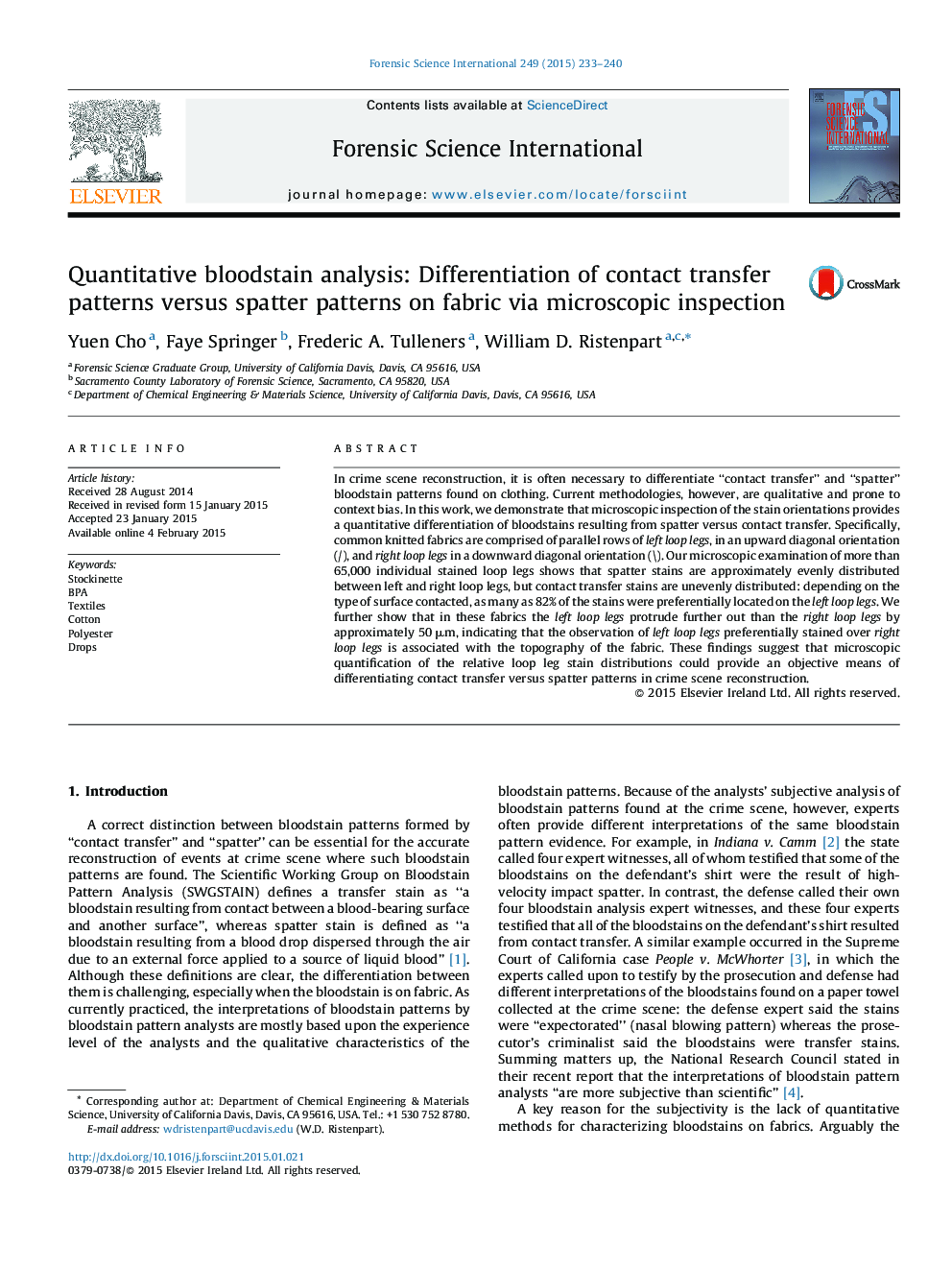| کد مقاله | کد نشریه | سال انتشار | مقاله انگلیسی | نسخه تمام متن |
|---|---|---|---|---|
| 95428 | 160429 | 2015 | 8 صفحه PDF | دانلود رایگان |
• We generated bloodstains on fabric by either contact transfer or dynamic spray.
• We used optical microscopy to count how many fabric loop legs were stained.
• Dynamic stains were evenly distributed between “left” and “right” loop legs.
• Direct contact stains were unevenly distributed: more left than right legs were stained.
• Confocal microscopy showed the left loops leg protruded further than right loop legs.
In crime scene reconstruction, it is often necessary to differentiate “contact transfer” and “spatter” bloodstain patterns found on clothing. Current methodologies, however, are qualitative and prone to context bias. In this work, we demonstrate that microscopic inspection of the stain orientations provides a quantitative differentiation of bloodstains resulting from spatter versus contact transfer. Specifically, common knitted fabrics are comprised of parallel rows of left loop legs, in an upward diagonal orientation (/), and right loop legs in a downward diagonal orientation (\). Our microscopic examination of more than 65,000 individual stained loop legs shows that spatter stains are approximately evenly distributed between left and right loop legs, but contact transfer stains are unevenly distributed: depending on the type of surface contacted, as many as 82% of the stains were preferentially located on the left loop legs. We further show that in these fabrics the left loop legs protrude further out than the right loop legs by approximately 50 μm, indicating that the observation of left loop legs preferentially stained over right loop legs is associated with the topography of the fabric. These findings suggest that microscopic quantification of the relative loop leg stain distributions could provide an objective means of differentiating contact transfer versus spatter patterns in crime scene reconstruction.
Figure optionsDownload high-quality image (366 K)Download as PowerPoint slide
Journal: Forensic Science International - Volume 249, April 2015, Pages 233–240
